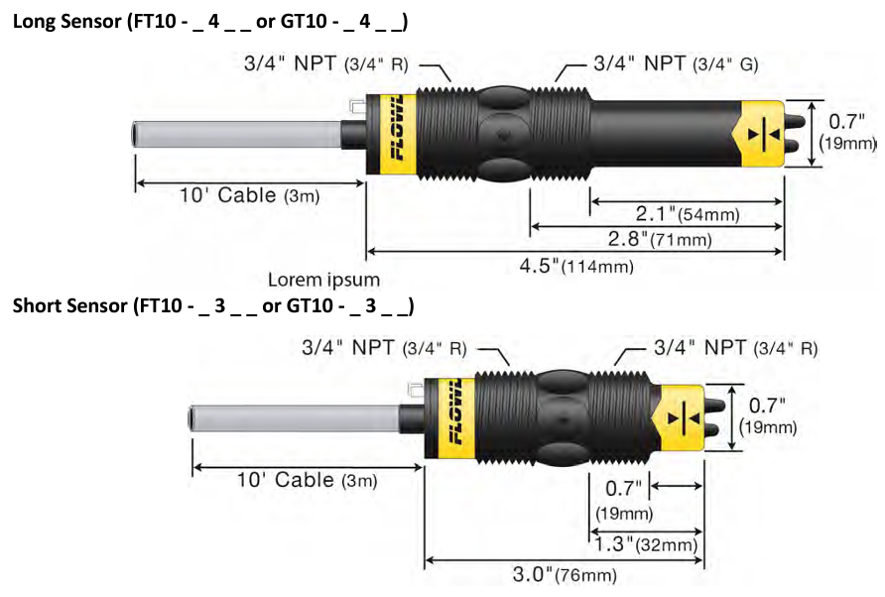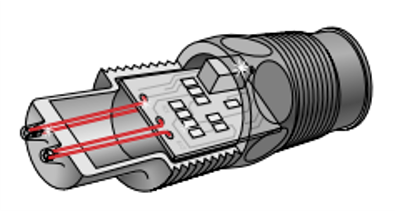 |
|||
|
What is the working principle of THERMAL DISPERSION FLOW SWITCH? |
|||
|
|||
|
The thermal dispersion flow switches measure liquid or gas temperature to determine changes in flow velocity. As fluid flows across the sensing tips, the temperature is reduced proportionately as a function of the flow rate. When a temperature or velocity shift reaches the user defined set point, the switch changes state indicating the appropriate flow condition (flow of no‐flow).
|
|||
|
Best for application of:  General, corrosive liquids and gases General, corrosive liquids and gases Relatively clean, non-coating media Relatively clean, non-coating media Liquid examples include deionized water and sulfuric acid Liquid examples include deionized water and sulfuric acid Gas examples include nitrogen and scrubber exhaust fumes Gas examples include nitrogen and scrubber exhaust fumes Liquid being measured may need to be electrically grounded, not recommendable for use with electrically charged application liquids Liquid being measured may need to be electrically grounded, not recommendable for use with electrically charged application liquids The sensing tip of the sensor must always be submersed in the liquid and never exposed to air The sensing tip of the sensor must always be submersed in the liquid and never exposed to air The liquid temperature must remain constant and not change throughout the process The liquid temperature must remain constant and not change throughout the process |
|||









